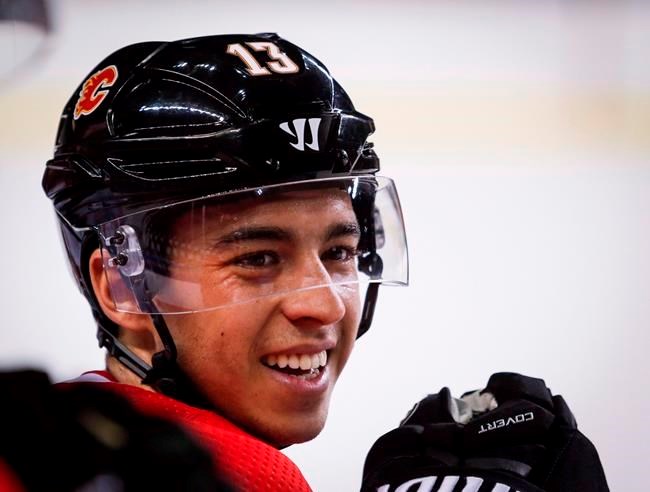When slash after slash broke one of Johnny Gaudreau's fingers, he called it part of the game.
The Calgary Flames winger known as "Johnny Hockey" is one of the NHL's most marketable players, so broken bones should be a problem.
Slashing has become such a regular element in NHL games that it necessitated 791 minor penalties last season with countless more going uncalled. Gaudreau's broken finger and Marc Methot's lacerated pinkie brought enough attention to the issue that the league is taking a stronger stand on flagrant slashing this year to cut down on injuries and obstruction.
"I think it's tough for the refs to make those calls in games: You don't really know how bad a slash is," said Gaudreau, who sat out two and a half weeks after surgery to repair a fractured finger on his left hand. "But if they can harp down or look at it a little more closely, I think it might cause a little less injuries. Guys won't be missing substantial time. I think it'd be huge."
It was impossible to ignore slashing when Sidney Crosby sliced Methot's finger open during a game in March, forcing the
After members of the league's competition committee recommended a closer look at slashing, officials have been instructed that it's OK to call it more this season. NHL director of officiating Stephen Walkom said the rise in slashing over the past decade came about after the stricter enforcement of hooking and holding following the 2004-05 lockout with players finding new tactics to slow the game down.
"Players started slashing in between the hands and on the hands, and the whacking became hacking became something that became the norm in the game," Walkom said. "It's time to have a stronger enforcement to let the players know what they can and can't do. If you're going to be whacking a player's hands six, eight feet from the puck, there's a good chance that you're going to be penalized if it's seen by the officials on the ice."
So many slashing penalties were called in the first few preseason games that it was somewhat comical. Philadelphia Flyers
Walkom sent a note reminding referees that the intent was to focus on slashes around the hands, not every time a player's stick hits an opponent in the heavily-padded pants. Slashing at players' hands will not only be an area of emphasis on the ice but also from the league office where new
The former enforcer said slashes delivered with greater force or directed at players' fingers will be met with fines and/or suspensions.
"We're going to try and change player
Reducing unnecessary injuries is just one piece of this tighter enforcement. As with the crackdown on the hooking, holding and interference that mucked games up in the late 1990s and early 2000s, fewer slashes should open the ice up for offensive players at even-strength and potentially lead to more power plays.
"In some ways it's going to put even bigger premium on getting body position and not being stuck in a position where you have to reach for a guy," Carolina Hurricanes forward Jeff Skinner said. "Usually that's a positive sign for getting more opportunities to produce."
St. Louis Blues coach Mike Yeo said he already noticed players slashing less often a few games into the preseason. That's one of the intended consequences of calling certain types of slashes more.
"The players are the smartest people in the game relative to the game and they will adjust because nobody wants to sit in the penalty box," Walkom said. "A lot of it's reflex and habit, but the players will break old habits with a consistent enforcement."
Old habits die hard, but it's easier than healing broken bones.
___
Follow Hockey Writer Stephen Whyno on Twitter at http://www.twitter.com/SWhyno
___
For more AP NHL coverage: https://apnews.com/tag/NHLhockey
Stephen Whyno, The Associated Press
